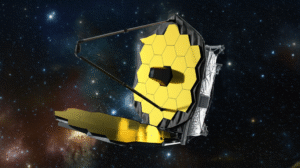SPHEREx: Unveiling the Universe Through an All-Sky Spectral Survey
SPHEREx: Unveiling the Universe Through an All-Sky Spectral Survey
Abstract
The SPHEREx mission represents a groundbreaking endeavor in the field of astronomy, aiming to map the sky in near-infrared light with unprecedented detail. This mission is poised to revolutionize our understanding of the cosmos by providing a comprehensive survey that could uncover new insights into the universe’s structure, composition, and evolution. By leveraging advanced near-infrared technology, SPHEREx has the potential to address some of the most fundamental questions about the universe, from the origins of galaxies to the distribution of water in planetary systems. The mission’s innovative approach and its capacity to generate a wealth of data underscore its significance in the ongoing quest to unravel the mysteries of the cosmos.
Introduction
SPHEREx, short for Spectro-Photometer for the History of the Universe, Epoch of Reionization, and Ices Explorer, represents a groundbreaking mission designed to conduct an all-sky spectral survey. This ambitious project aims to map the sky in near-infrared light, providing unprecedented data on the history of the universe, the epoch of reionization, and the distribution of ices in our galaxy. The significance of such a survey cannot be overstated, as it will offer insights into the origins of the universe and the processes that have shaped it over billions of years.
Historically, missions like the Hubble Space Telescope and the James Webb Space Telescope have provided valuable data on specific regions of the sky or wavelengths. However, SPHEREx is set apart by its comprehensive approach, aiming to cover the entire sky in a way that no previous mission has. This will allow scientists to gather a more complete picture of the universe’s structure and composition, marking a significant leap forward in our understanding of cosmic history.
Science Goals
Understanding the Universe’s Earliest Moments
- Exploring the inflationary epoch to understand the universe’s rapid expansion. Citation 1
- How SPHEREx will map the distribution of galaxies to study cosmic inflation.
Deciphering the Chemistry of the Cosmos
- Investigating galactic ices to uncover the molecular building blocks of life. Citation 2
- The role of SPHEREx in astrochemistry and the study of interstellar medium.
Tracing the Evolution of Galaxies
- Analyzing extragalactic light to understand galaxy formation and evolution. Citation 3
- SPHEREx’s contribution to mapping the large-scale structure of the universe.
Instrumentation and Technology
Cutting-Edge Optics
The SPHEREx mission is equipped with a state-of-the-art optical system designed to perform wide-field spectral imaging across the near-infrared spectrum. This system is pivotal for capturing the detailed spectral data necessary for the mission’s ambitious science objectives. The optics are engineered to cover a broad field of view while maintaining high sensitivity and resolution, enabling SPHEREx to survey the sky in unprecedented detail. By leveraging advanced optical technologies, SPHEREx can achieve its goal of mapping the universe in near-infrared light, providing insights into the origins of the universe and the distribution of water in our galaxy.
Advanced Detectors
At the heart of SPHEREx’s instrumentation are its highly sensitive detectors, specifically optimized for near-infrared light detection. These detectors are crucial for the mission’s ability to observe faint astronomical objects and phenomena. Their sensitivity allows SPHEREx to collect data over a wide spectral range, facilitating the study of cosmic history, galaxy formation, and the search for water and other vital molecules in space. The detector technology employed by SPHEREx represents a significant advancement in our capability to explore the universe in the near-infrared spectrum, directly contributing to the achievement of the mission’s science goals.
Innovative Cryogenics
Maintaining the sensitive instruments of SPHEREx at optimal operating temperatures is achieved through an innovative cryogenic system. This system is essential for minimizing thermal noise and ensuring the detectors and optics perform at their highest efficiency. The challenges of operating in the harsh environment of space are met with sophisticated cryogenic solutions that keep the instruments cooled to the necessary temperatures. SPHEREx’s cryogenic system is a testament to the engineering ingenuity required to support cutting-edge astronomical research, enabling the mission to deliver high-quality data for years to come.
Mission Architecture
Strategic Orbit Selection
SPHEREx is designed to operate in a sun-synchronous orbit, which is a strategic choice that enables the spacecraft to perform an all-sky survey with unprecedented efficiency. This orbit allows SPHEREx to maintain a consistent angle between the sun and the orbital plane, ensuring that the spacecraft’s solar panels are always illuminated while it surveys the sky. The sun-synchronous orbit is particularly advantageous for SPHEREx’s mission as it facilitates continuous observation without the interference of Earth’s shadow, enabling the collection of high-quality data across the entire sky over the course of its mission.
Efficient Scanning Strategy
SPHEREx employs a scanning strategy that is meticulously designed to maximize both sky coverage and the quality of the data collected. By rotating slowly and scanning the sky in a systematic pattern, SPHEREx ensures that every point in the sky is observed multiple times, enhancing the depth and reliability of the survey. This approach strikes an optimal balance between the depth of observation—allowing for the detection of faint astronomical objects—and comprehensive sky coverage, ensuring that no region of the universe is left unexplored. The efficiency of SPHEREx’s scanning strategy is a cornerstone of its mission, enabling it to achieve its scientific objectives within the planned mission timeline.
Data and Discoveries
Comprehensive Data Products
SPHEREx is set to generate a wealth of data, encompassing various types and formats that will be instrumental for astronomical research. The mission will produce spectral data cubes, which are three-dimensional datasets combining spatial information with spectral data across different wavelengths. These data cubes will be available in standard formats such as FITS (Flexible Image Transport System), ensuring compatibility with a wide range of astronomical software tools. Additionally, SPHEREx will release catalogs of sources detected across the sky, providing positions, brightness, and spectral information for millions of galaxies, stars, and other celestial objects.
The accessibility of SPHEREx data is a cornerstone of the mission’s design. All data products will be made publicly available through NASA’s Infrared Science Archive (IRSA), allowing researchers worldwide to download and analyze the data. This open-access policy is expected to foster a wide range of scientific inquiries, from studying the composition of interstellar dust to mapping the large-scale structure of the universe. The potential uses of SPHEREx data are vast, enabling discoveries in areas such as galaxy evolution, star formation, and the search for water and organic molecules in space.
Pioneering Simulations
In preparation for its observations, SPHEREx relies on sophisticated simulations to model the expected data and identify potential challenges. These simulations play a crucial role in optimizing the mission’s observing strategy and in developing the algorithms needed to process and interpret the data. By simulating the sky as SPHEREx will see it, scientists can test different scenarios, such as varying levels of interstellar dust or the presence of unexpected celestial phenomena.
Simulations also help in understanding the potential outcomes of SPHEREx observations, enabling the scientific community to prepare for the types of discoveries the mission might make. For example, simulations can predict how well SPHEREx will be able to detect the spectral signatures of water ice in distant galaxies or how accurately it can measure the redshifts of millions of galaxies to map the universe’s expansion. Through these pioneering simulations, SPHEREx is not just preparing for its mission but is also laying the groundwork for future astronomical research.
Conclusion
SPHEREx, the Spectro-Photometer for the History of the Universe, Epoch of Reionization, and Ices Explorer, is poised to revolutionize our understanding of the cosmos. Its mission objectives are clear: to map the sky in near-infrared light, uncovering the secrets of the universe’s origins, the life cycle of galaxies, and the prevalence of molecules essential for life in planetary systems. By doing so, SPHEREx is expected to make significant contributions to astronomy, offering unprecedented insights into the cosmic web and the distribution of matter across the universe.
The broader implications of SPHEREx’s findings extend far beyond the realm of astronomy. The mission’s ability to probe the universe’s history and the chemical foundations of life has the potential to answer fundamental questions about our place in the cosmos. Moreover, the data collected by SPHEREx will serve as a valuable resource for scientists across various disciplines, fostering interdisciplinary research and innovation. Ultimately, SPHEREx represents a monumental step forward in our quest to understand the universe and our existence within it.
References
- Citation 1: ‘Insights into cosmic inflation from galaxy distribution maps.’
- Citation 2: ‘Galactic ices as precursors to life’s molecular foundations.’
- Citation 3: ‘Extragalactic light mapping reveals universe’s large-scale structure.’








